My Turn: Forestland stores more carbon than grazing land, produces less
| Published: 05-31-2023 11:32 PM |
My previous article about the productivity of land used for animal products versus that used for plant-based foods elicited comments from others defending the use of local pasture lands for grazing meat-producing animals [“Toting up food value of plants vs. animals,” Recorder, April 25].
Dorothea Sotiros, in her May 1 letter, argued that regenerative grazing builds soil because it mimics the predator/grazing animal process that takes place on the savannahs, prairies, steppes and pampas of earth’s open natural grasslands [Regenerative farming: Livestock as soil-building tool”]. Ashlyn Bristle suggested that grazing on hilly lands that she stewards that are too steep for tractor use and cannot be used to raise any other food crops is the best use of such marginal lands [“Room for livestock in sustainable food web,” Recorder, May 5].
Both writers argue that grazing is a sound ecological use of the land and that there are no better alternatives. While I focused on the much higher capacity of land that is used for plant foods, the main suggestion that I made was that the land used for grazing would be better utilized, from a climatological point of view, if it were allowed to revert to the forestland that it was before the European conquest of New England began a mere four centuries ago. Let’s take a look …
Grasslands store, according to most analyses, between0 .33 and 1.87 tons of CO2 per acre per year. I’ve used 1.1 tons per acre for our analysis.
Forestland has the capacity to store from 4.3 to 40.7 tons of CO2 per acre. This range is due to the variety of tree habitats from tropical rainforest to northern boreal pine forests. I assume that our mixed New England forests are at an average of 22 tons of sequestered carbon per acre per year. Forestland stores more carbon!
Additionally, the production of meats, like all foods for humans, generates greenhouse gases. Check out OurWorldinData.org, where you will see greenhouse gas emissions for various foods and learn that nuts, apples and root vegetables produce 0.4 pounds of greenhouse gases per pound of edible food. On the other end of the spectrum, beef produces 100 pounds of greenhouse gases per pound of edible food. Thus, beefs’ carbon footprint is 250 times greater than apples.
Using the data and that from the previous articles, I calculated the greenhouse gases emissions of one local farm’s meat harvest to be 6.69 tons per acre.
While the rotational grazing practice can store 1.1 tons per acre of CO2, the greenhouse gases cost of the meats produced on that land means that an acre of the farmland actually results in the release of 5.59 tons of GHG to the atmosphere per year. By managing the land as forestland instead of meat-producing pasture the net reduction of greenhouse gas emissions would be over 27 tons per acre per year. This would offset the greenhouse gas emissions of about 500 cars over the 100 acres of land that the farm is using for meat production.
Article continues after...
Yesterday's Most Read Articles
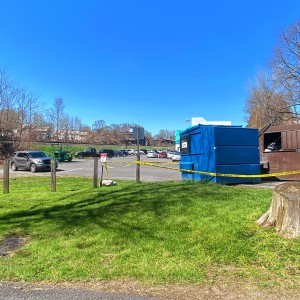 Greenfield man arrested in New York on murder charge
Greenfield man arrested in New York on murder charge
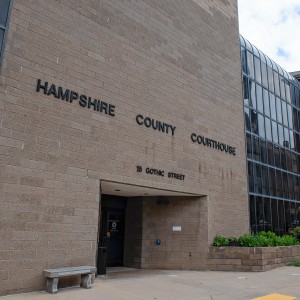 Man allegedly steals $100K worth of items from Northampton, South Deerfield businesses
Man allegedly steals $100K worth of items from Northampton, South Deerfield businesses
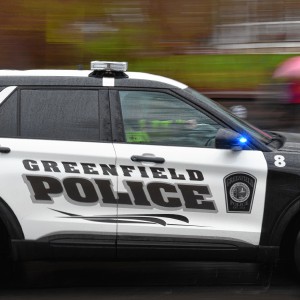 Greenfield Police Logs: April 9 to April 17, 2024
Greenfield Police Logs: April 9 to April 17, 2024
 Former Leyden police chief Daniel Galvis charged with larceny
Former Leyden police chief Daniel Galvis charged with larceny
 Shea Theater mural artist chosen out of 354 applicants
Shea Theater mural artist chosen out of 354 applicants
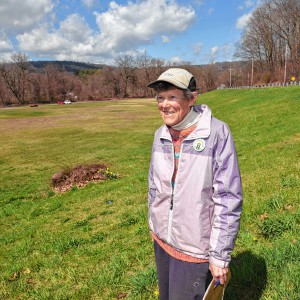 Millers Meadow idea would ‘completely transform’ Colrain Street lot in Greenfield
Millers Meadow idea would ‘completely transform’ Colrain Street lot in Greenfield
Bristle also argues that the pasture land is “one of the least disruptive types of food production; our land is perpetually undisturbed.” This implies, incorrectly, that only pastures can protect the land from erosion, etc. What about forests? They completely cover the land with a much broader biological diversity than pastures. Almost certainly, the open lands that both of these rotational grazing farms utilize was old growth forest before the European invaders cleared off Indigenous people and then the forest to provide pasture for their European grazing animals. Pastures not mowed or grazed will return to forest in a few decades.
Forestland does not have to be a financial loser. It can be managed for cash-producing crops including maple syrup, hickory and other nut crops, mushrooms, recreation and timber. And because responsible stewards of forestland are performing a critical function of sequestering carbon, why not pay them for it?
Lastly, eco-justice thinking says that the worst effects of climate change tend to be borne by the poorest, disenfranchised humans more than the wealthier among us. By holding the pasture land open in order to provide a few delectable meaty morsels for some in our immediate affluent neighborhood, we are causing harm to people far away, even to the extent of reducing the amount of food that is available for marginally surviving human populations.
When one views the situation through such a political-economic lens, the unnatural preservation of open grazing land in New England begins to, distressingly, look like another page out of the playbook that the privileged have always used to get a disproportionately large share of Mother Earth’s resources.
We can all help to reduce the ecological disaster of climate change by eating less meat.
Paul Voiland lives in Montague Center.

 Guest columnists Ellen Attaliades and Lynn Ireland: Housing crisis is fueling the human services crisis
Guest columnists Ellen Attaliades and Lynn Ireland: Housing crisis is fueling the human services crisis My Turn: April is second chance month
My Turn: April is second chance month My Turn: Judgmental about malaise
My Turn: Judgmental about malaise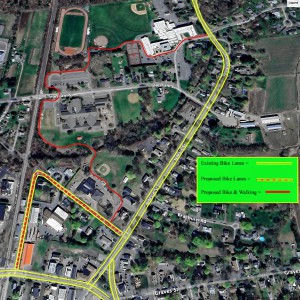 Greg Franceschi: Support bike lanes and walking paths in South Deerfield
Greg Franceschi: Support bike lanes and walking paths in South Deerfield
